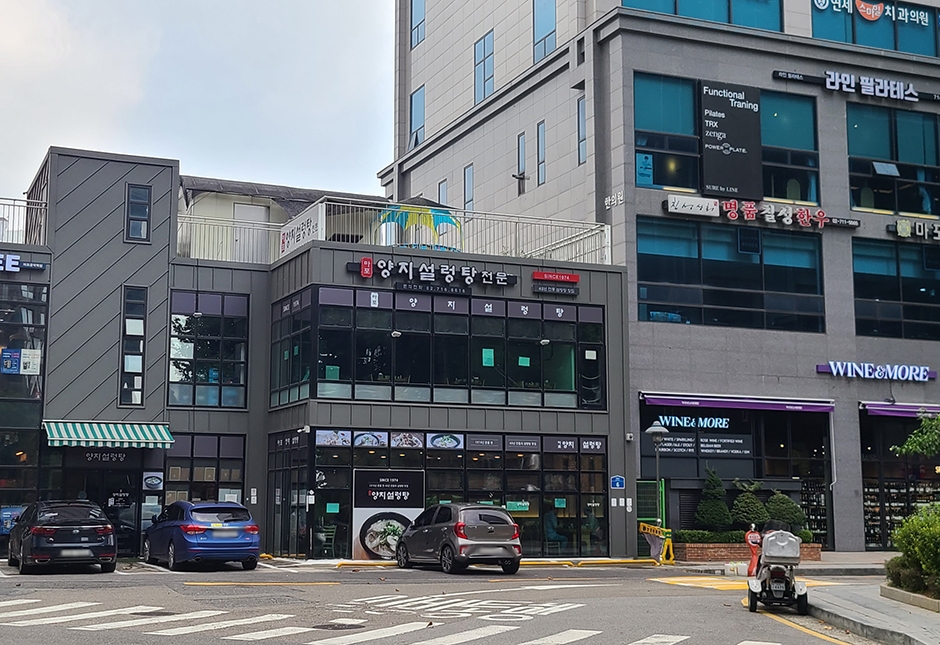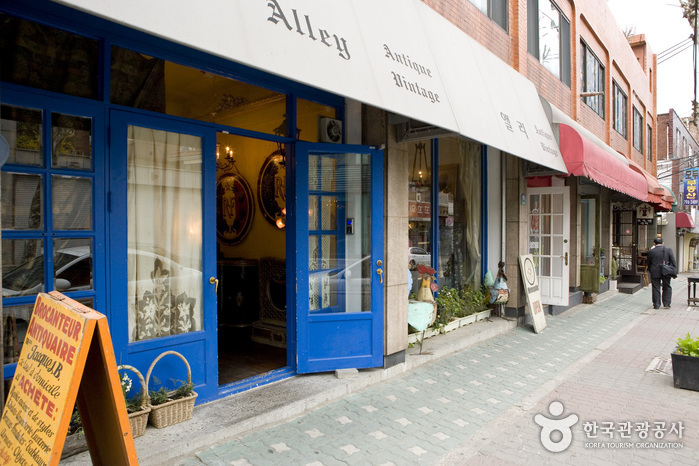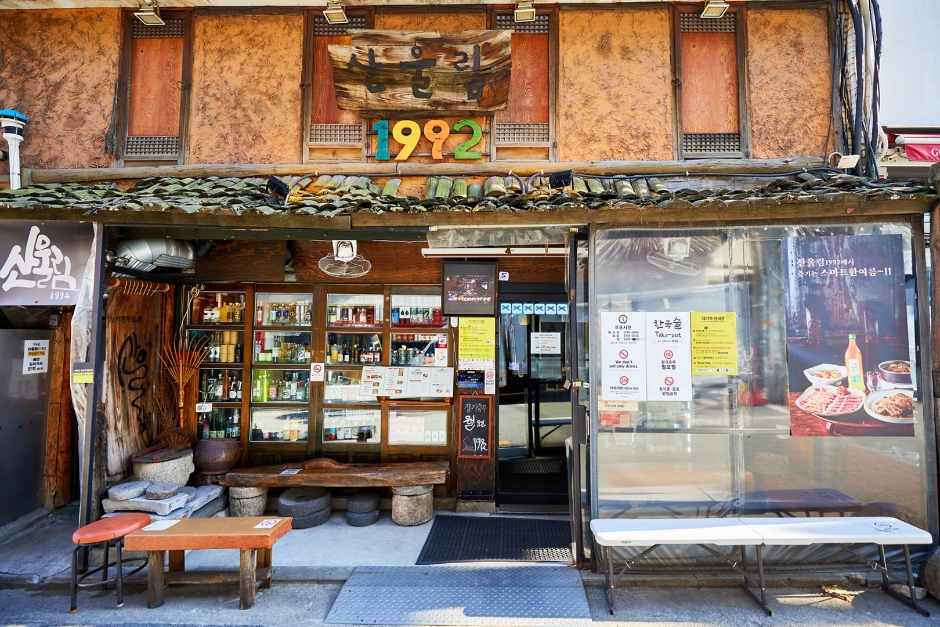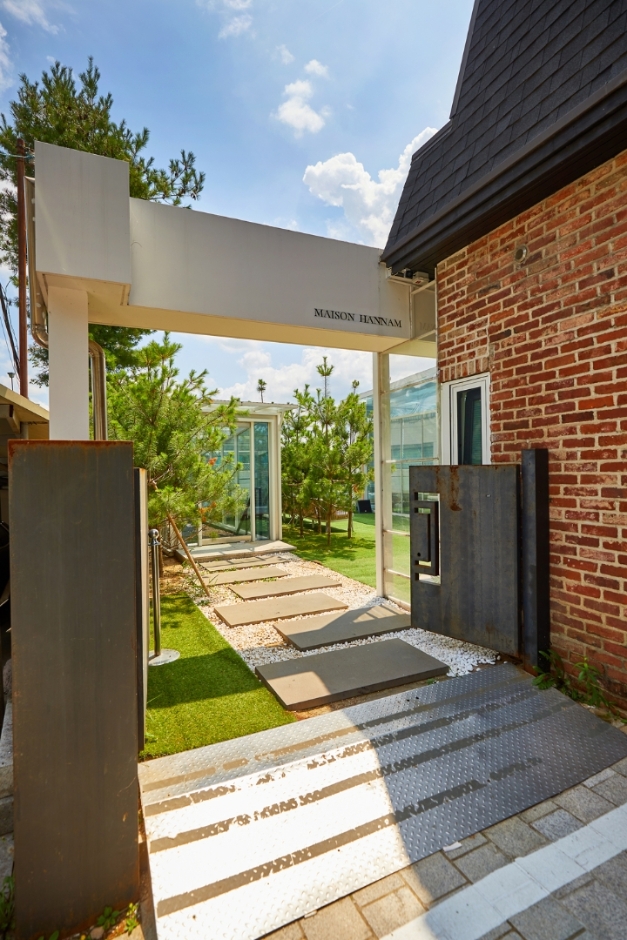Olive Young - Jungnang Branch [Tax Refund Shop] (올리브영 중랑점)
7.4Km 2024-06-28
6, Mangu-ro 32-gil, Jungnang-gu, Seoul
-
Mapo Yangji Seolleongtang (마포양지설렁탕)
7.4Km 2024-02-22
6 Saechang-ro, Mapo-gu, Seoul
Mapo Yangji Seolleongtang, opened its doors in 1977. The distinctive feature of this seolleongtang (ox bone soup) establishment is its clear broth with minimal meat odor, showcasing the rich flavor of deeply boiled beef bones and the sweetness of beef brisket. Served in a hot pot, it is accompanied by freshly cooked rice and hot soup. In addition to the signature dish, they also offer variations like naejangtang (offal soup), kkoritang (oxtail soup), joktang (ox feet soup) and doganitang (ox knee soup).
Itaewon Antiques Street (이태원 앤틱 가구 거리)
7.5Km 2025-04-11
109-1 Bogwang-ro, Yongsan-gu, Seoul
Itaewon Antiques Street was formed around the late 1960s, when a group of antique dealerships from Asia, Europe, and North America settled in the district. This 1km-long street is home to antique dealers offering antique sofa, chairs, and tables. Some shops also offer antique decorations, accessories, and clothing. It is a famous shopping district with its own unique ambience from that of Seoul. During spring and autumn, Itaewon Antique Festival takes place, allowing visitors to shop and enjoy cultural performances.
Olive Young - Suncheonhyang Branch [Tax Refund Shop] (올리브영 순천향입구)
7.5Km 2024-04-16
71, Daesagwan-ro, Yongsan-gu, Seoul
-
LG Best Shop - Donggyo Branch [Tax Refund Shop] (엘지베스트샵 동교점)
7.5Km 2024-04-18
6, Sinchon-ro, Mapo-gu, Seoul
-
Waple Wood Artwork Place (와플목공방)
7.5Km 2025-10-30
5-6 Wangsimni-ro 10-gil, Seongdong-gu, Seoul
Interior items made from wood
This workshop is visited by celebrities such as Park Narae of the entertainment program 'I Live Alone' and KAI of EXO. It is also the place where the senior wooden box that appeared in the movie 'PARASITE' was made. You can make your own interior accessories such as chairs and tabletops using hardwood. One-day classes on making ballpoint pens and mechanical pencils are also popular.
Sanullim 1992 (산울림1992)
7.5Km 2024-03-15
60 Seogang-ro 9-gil, Mapo-gu, Seoul
This Korean bar and restaurant serves Korean dishes with nearly 200 types of traditional Korean liquor on offer, including makgeolli (unrefined rice wine), refined rice wine, and distilled liquor. Its food menu includes bean curd with stir-fried kimchi, ox knee soup (soup made by boiling down calcium-rich ox knee), and cabbage wraps with soy sauce braised pork. The signature menu here, however, is “Bansang,” set menus of the customer's choice ranging from No. 1 to No. 5 served on a round dining table. Each number has a different pricing and composition, but all offer new and unique flavors. The savory and crispy cheese and potato pancake goes perfectly with tangy omija makgeolli.
Yeonnam-dong (연남동)
7.5Km 2024-03-19
Yeonnam-dong, Mapo-gu, Seoul
Yeonnam-dong, located near Hongik University Station, has become a hot spot in Seoul as young artists and hipsters gather. It is densely packed with art spaces, and every alley is filled with unique concept cafés and many restaurants. There are also many guesthouses, editorial shops, and fashion stores, along with Yeontral Park, which was transformed from the old Gyeongui Line railroad into a park.
Gyeongui Line Forest Park (Yeontral Park) (경의선숲길(연트럴파크))
7.5Km 2023-08-11
133, Donggyo-ro 51-gil, Mapo-gu, Seoul
Gyeongui Line Forest Park is a linear city park located in Mapo-gu and is also called Yeontral Park. It includes Daeheung-dong, Yeonnam-dong, Saechanggogae Pass, Changjeon-dong, Sinsu-dong, and Wonhyo-ro, which were opened in this order. Gyeongui Line Forest Park is established atop the Gyeongui railroad line and the Gyeongui Line and Airport Railroad Express are constructed as a double track underground. Gyeongui Line Forest Park was designed to be incomplete on purpose to invite the citizens in completing the park. The area which could have been left empty and neglected has turned into a meaningful green park for the citizens by the citizens.
Maison Hannam (메종 한남)
7.5Km 2024-12-27
24 UN village 3-gil, Yongsan-gu, Seoul
Remodeled from the prevoius Italian Embassy, this restaurant boasts an excellent view of the Hangang River and Lotte World Tower. It is a popular place for dates or birthday parties, requiring a reservation at least a month in advance to sit on the terrace with a view of the Hangang River. Among the recommended menus is the Maison Lunch Set, which offers three courses, including appetizers (such as grilled scallops), pasta, and Korean beef steak. The food is served warm, and the utensils are changed frequently for a pleasant meal. There is a glass greenhouse on the outdoor terrace, so guests can enjoy the Hangang River view regardless of the weather.



![Olive Young - Suncheonhyang Branch [Tax Refund Shop] (올리브영 순천향입구)](http://tong.visitkorea.or.kr/cms/resource/21/2889221_image2_1.jpg)
![LG Best Shop - Donggyo Branch [Tax Refund Shop] (엘지베스트샵 동교점)](http://tong.visitkorea.or.kr/cms/resource/30/2890130_image2_1.jpg)



 English
English
 한국어
한국어 日本語
日本語 中文(简体)
中文(简体) Deutsch
Deutsch Français
Français Español
Español Русский
Русский